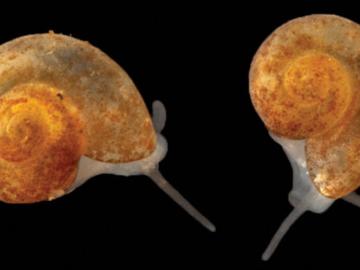
Filter News
Area of Research
- (-) Energy Science (54)
- (-) Materials (52)
- (-) National Security (7)
- Advanced Manufacturing (4)
- Biological Systems (2)
- Biology and Environment (72)
- Computational Biology (1)
- Computational Engineering (2)
- Computer Science (1)
- Fusion and Fission (3)
- Fusion Energy (1)
- Materials for Computing (3)
- Mathematics (1)
- Neutron Science (23)
- Nuclear Science and Technology (7)
- Quantum information Science (2)
- Supercomputing (75)
News Topics
- (-) Bioenergy (32)
- (-) Clean Water (10)
- (-) Composites (19)
- (-) Exascale Computing (3)
- (-) Molten Salt (3)
- (-) Physics (28)
- (-) Statistics (1)
- (-) Summit (8)
- 3-D Printing/Advanced Manufacturing (92)
- Advanced Reactors (10)
- Artificial Intelligence (24)
- Big Data (12)
- Biology (15)
- Biomedical (11)
- Biotechnology (5)
- Buildings (38)
- Chemical Sciences (33)
- Computer Science (50)
- Coronavirus (16)
- Critical Materials (19)
- Cybersecurity (26)
- Energy Storage (85)
- Environment (69)
- Fossil Energy (2)
- Frontier (3)
- Fusion (8)
- Grid (44)
- High-Performance Computing (13)
- Hydropower (3)
- Irradiation (1)
- Isotopes (13)
- ITER (1)
- Machine Learning (20)
- Materials (95)
- Materials Science (90)
- Mathematics (3)
- Mercury (3)
- Microelectronics (1)
- Microscopy (29)
- Nanotechnology (41)
- National Security (37)
- Neutron Science (44)
- Nuclear Energy (26)
- Partnerships (20)
- Polymers (21)
- Quantum Computing (3)
- Quantum Science (13)
- Security (15)
- Simulation (4)
- Space Exploration (5)
- Transportation (72)
Media Contacts

Ada Sedova’s journey to Oak Ridge National Laboratory has taken her on the path from pre-med studies in college to an accelerated graduate career in mathematics and biophysics and now to the intersection of computational science and biology

In the search to create materials that can withstand extreme radiation, Yanwen Zhang, a researcher at the Department of Energy’s Oak Ridge National Laboratory, says that materials scientists must think outside the box.

In the race to identify solutions to the COVID-19 pandemic, researchers at the Department of Energy’s Oak Ridge National Laboratory are joining the fight by applying expertise in computational science, advanced manufacturing, data science and neutron science.

Sometimes conducting big science means discovering a species not much larger than a grain of sand.

Scientists at the Department of Energy’s Oak Ridge National Laboratory have developed a new method to peer deep into the nanostructure of biomaterials without damaging the sample. This novel technique can confirm structural features in starch, a carbohydrate important in biofuel production.
A team of scientists led by Oak Ridge National Laboratory found that while all regions of the country can expect an earlier start to the growing season as temperatures rise, the trend is likely to become more variable year-over-year in hotter regions.

A novel approach developed by scientists at ORNL can scan massive datasets of large-scale satellite images to more accurately map infrastructure – such as buildings and roads – in hours versus days.

An international team of researchers has discovered the hydrogen atoms in a metal hydride material are much more tightly spaced than had been predicted for decades — a feature that could possibly facilitate superconductivity at or near room temperature and pressure.

Scientists at have experimentally demonstrated a novel cryogenic, or low temperature, memory cell circuit design based on coupled arrays of Josephson junctions, a technology that may be faster and more energy efficient than existing memory devices.

While Tsouris’ water research is diverse in scope, its fundamentals are based on basic science principles that remain largely unchanged, particularly in a mature field like chemical engineering.


